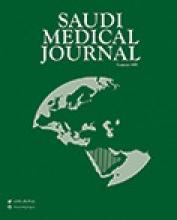Abstract
OBJECTIVE: To determine the tigecycline in-vitro susceptibility of naive gram-negative pathogens from serious infections in Delhi, India.
METHODS: During July to October 2007 investigations were carried out to determine the tigecycline in vitro susceptibility of 50 consecutive gram-negative pathogens from serious infections at the Sant Parmanand Hospital, Delhi, India. Minimum tigecycline inhibitory concentrations were determined employing the E test method (AB Biodisk).
RESULTS: Twenty-four percent of isolates were found to be tigecycline resistant or partly susceptible. Susceptibility of the isolates was lower than meropenem but similar to piperacillin-tazobactam, amoxicillin-clavulanic acid, and amikacin.
CONCLUSION: Tigecycline resistance was prevalent in the gram-negative isolates from serious infections prior to its marketing in India. The choice of any recently marketed antibiotic for a pilot treatment against serious gram-negative infections should not be automatic. In the initial phase of its marketing, it should be evaluated in parallel with the antibiotics with excellent local susceptibility profiles.
- Copyright: © Saudi Medical Journal
This is an open-access article distributed under the terms of the Creative Commons Attribution-Noncommercial-Share Alike 3.0 Unported, which permits unrestricted use, distribution, and reproduction in any medium, provided the original work is properly cited.






